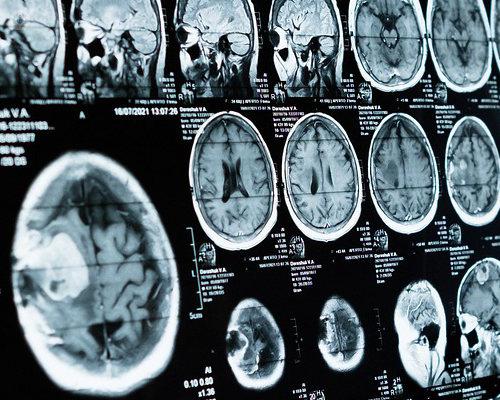Supporting patients with traumatic brain injury
Written by:A traumatic brain injury has an impact regardless of its severity, but differing levels of support for the symptoms they produce are required.
Here to provide a comprehensive guide to symptoms and what treatments are available for traumatic brain injuries is leading London-based consultant neurologist Dr Colette Griffin.

What are the common causes of traumatic brain injuries?
Traumatic brain injuries can be divided into penetrating or non-penetrating injuries. Penetrating injuries are caused by any object that penetrates the skull. Non penetrating injuries are caused by any trauma to the head. Both can be seen in the context of a road traffic accident, a fall or an assault. Non-penetrating injuries can also be seen due to a sporting collision and in the elderly population a fall from standing is the most common cause.
What are the symptoms of traumatic brain injuries?
People who have sustained a traumatic brain injury can present in a variety of ways. Most people will have a headache. Vertigo, visual disturbances, poor sleep patterns and loss of sense of taste and smell can also occur. Memory problems can be common in the more severely-affected groups. This can consist of poor concentration and attention, difficulties multi-tasking, poor short-term memory, difficulty communicating and difficulties with complex planning tasks.
More severely-affected people can have post-traumatic amnesia and behavioural changes. Depression is more common in all severities of injury. The injury can also have an impact on relationships with family and friends, in addition to financial strains due to an inability to work or drive.
How are traumatic brain injuries diagnosed?
There are many ways to diagnose a traumatic brain injury. A specialist taking a detailed history of the events and the symptoms is the first important step. Imaging of the brain (both CT scan and MRI scan) is also helpful to look for the presence of bleeding in the brain, bleeding outside the brain but under the skull, skull fractures and sheering injuries (diffuse axonal injury). Most specialists will use the Mayo Classification of traumatic brain injury. This takes into account features such as length of loss of consciousness, level of awareness (Glasgow Coma Scale) and the findings on brain imaging. People are then classified as either having had a mild traumatic brain injury, or a moderate-severe traumatic brain injury.
What treatments are available for traumatic brain injuries?
The most important thing for a person who has sustained a traumatic brain injury is to see a traumatic brain injury specialist. The specialist will be able to give an accurate diagnosis and develop a bespoke treatment plan based on the severity of the injury and the symptoms that have occurred.
In the acute phase (initial emergency hospital assessment), a consultant neurosurgeon will decide whether the injury is severe enough to require an urgent operation. This is most likely to be required in cases of extradural haematomas (bleeding outside the dural layer of the protective meninges surrounding the brain), or if there is a pressure effect from other bleeding such as a subdural haemorrhage (bleeding underneath the dural layer of the meninges). Depressed skull fractures also require urgent surgical repair. Some people are so severely injured that they require urgent admission to a neuro-intensive care unit for monitoring by a neurosurgical team.
As each case is different, it is critical that the treatment plan is bespoke for that person. Treatments required depend on the symptoms and their severity. Headaches can be treated with medication, and other more holistic treatment methods such as acupuncture.
Most people and most non specialists are not aware that medications containing either Paracetamol or Codeine make headaches worse. A such, these should not be used for longer than 24 to 48 hours in the context of traumatic brain injury.
Vertigo responds well to a specialist audio-vestibular assessment and vestibular physiotherapy. Visual symptoms usually settle slowly over time (if they are not due to a paralysis of the muscles that control eye movements). Taste and smell can recover but usually do so very slowly.
Memory and communication difficulties respond well to inter-disciplinary therapy with a specialist neuropsychologist and specialist neuro occupational therapist working closely with a specialist speech and language therapist. Balance and gait difficulties respond well to treatment by a specialist neuro physiotherapist.
Ensuring that all treatment is given according to an inter-disciplinary therapy model ensures that the treatment is given in a joined-up way and this ensures the best outcome. Depression and other mood or behavioural difficulties respond well to talking therapies, sometimes medication and review by a specialist neuropsychiatrist.
A case manager will often oversee the case and help to arrange review with a multi-disciplinary team. Charities such as Headway play a very important part in support both for the person with the traumatic brain injury, their family and friends. Vocational rehabilitation is vital to enable the person to return to the workplace.
What are the different types of traumatic brain injuries and how do they differ in terms of severity and treatment options?
There are multiple ways of classifying traumatic brain injuries and the most widely used classification is the Mayo classification as outlined above. The major differences in treatments are dependent on the appearances of the brain imaging and the symptoms that are present.
A consultant neurosurgeon will decide immediately whether urgent neurosurgical intervention is indicated. The decision whether to admit a patient to the neuro-intensive care unit depends on their clinical and neurological observations, as well as the appearances of the imaging. These decisions are made on a bespoke patient by patient basis.
In the hyperacute stage before the person arrives at hospital and in the emergency department, treatments can involve intubation and ventilation, as well as medication to reduce swelling in the brain.
Once the patient has stabilised enough to leave the intensive care unit, the treatments outlined in the previous question can be started. The basic principles of medical treatment outlined above and inter-disciplinary team working are always adhered to, regardless of the severity of the injury.
It’s important that at every step in the process the diagnosis and treatment is overseen by a traumatic brain injury specialist.
If you have a family member or a close personal connection that requires treatment for a traumatic brain injury, arrange an appointment with Dr Griffin via her Top Doctors profile.


